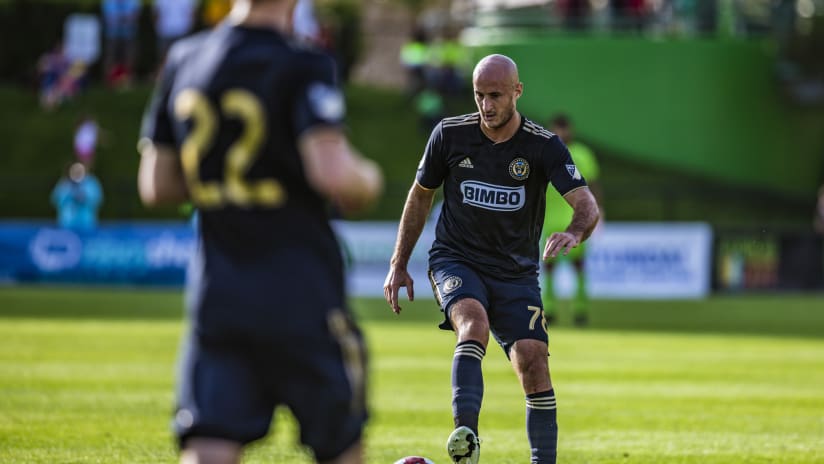Jack Elliott’s opening goal was a punch in the gut for New England Revolution. But for Philadelphia Union and head coach Jim Curtin, it was a particularly nice goal to get because it flowed from so many of the club’s guiding principles.
To understand, we need to go back to how the corner kick was earned. CJ Sapong, playing on the right wing, took on his man in order to create space to loft a cross in to Cory Burke, who had a free header on goal. The Union want their wingers to aggressively attack men on the dribble, and if they lose the ball the counterpress should make it difficult for the other team to get out in transition. Sapong does this well, but we need to take one more step back to see how the Union’s principles built this goal.
After the ball goes out of play on the right wing, watch how quickly Keegan Rosenberry retrieves it and puts it back into play. This prevents New England from both getting a breather and from setting up their defense. The Union heavily emphasize quick restarts, and Rosenberry’s hustle created the time necessary to build Philly’s opener against Chicago at home earlier this season.
Alright, flash forward and Burke has just nailed the post with his header. The ball falls to Antonio Delamea near the six yard box. The Revs defender does not clear the ball, but instead hits a bouncing pass at Andrew Farrell that ricochets off the right back’s left leg and falls to Fafa Picault, who delivers a shot that Matt Turner pushes over for the corner that will become the opener.
Why does Delamea choose to pass? Alejandro Bedoya.
The Union captain’s counterpressing is immediate, and it changes the speed of Delamea’s decision-making and quality of his pass. Bedoya could have contemplated Burke’s miss or thrown his arms in frustration (a response that, to be fair, is not foreign to the captain). Instead, he continued the play through and created the mistake that led to a corner kick.














